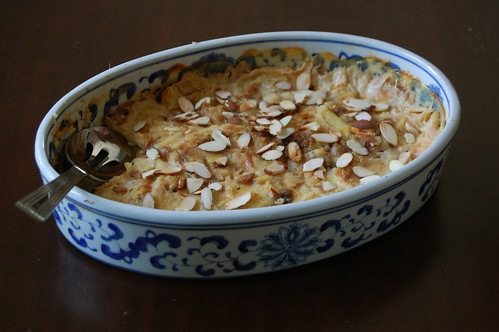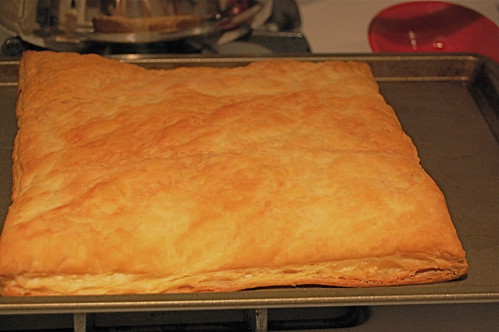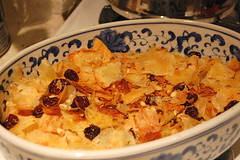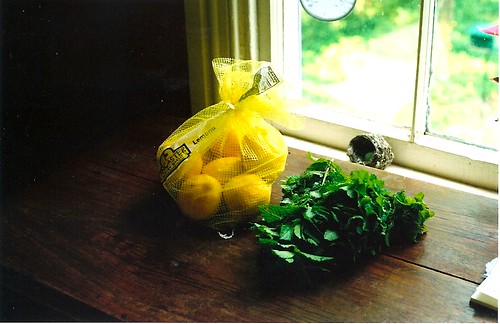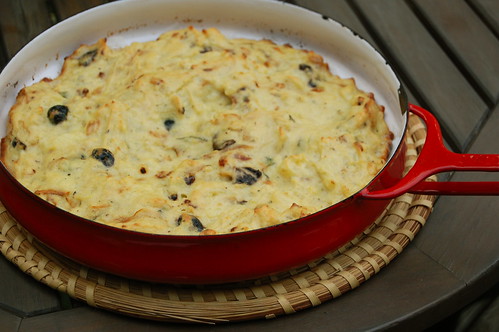 A maacouda is a sort of Tunisian potato omelette, similar to the Spanish tortilla, but made with eggs beaten into smooth mashed potatoes and then baked. I'll admit I don't know much about Tunisian cuisine, other than a prediliction for fish dishes, but I have noticed that Tunisian food contains more egg dishes than other Middle Eastern cuisines. Eggs are not used as often in Middle Eastern cooking as in the West, and cakes, breads, and desserts rarely contain egg. Tunisian food, however, has spiced eggs and chicken with eggs and egg tagine.
A maacouda is a sort of Tunisian potato omelette, similar to the Spanish tortilla, but made with eggs beaten into smooth mashed potatoes and then baked. I'll admit I don't know much about Tunisian cuisine, other than a prediliction for fish dishes, but I have noticed that Tunisian food contains more egg dishes than other Middle Eastern cuisines. Eggs are not used as often in Middle Eastern cooking as in the West, and cakes, breads, and desserts rarely contain egg. Tunisian food, however, has spiced eggs and chicken with eggs and egg tagine.

Anyway, maacouda by itself is a fine but somewhat plain dish, so I've spiced mine up with chunks of black olive and a hint of mint. It's best if you mash your potatoes until they are completely smooth, which makes the omelette fluffier and moister. The olives give it the right salty tang, and it's a good thing to pack in your lunch or for a light dinner with a salad.
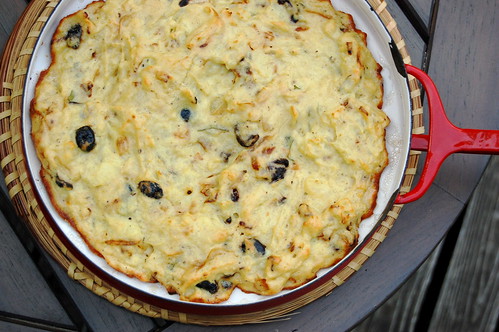
Maacouda (Tunisian Potato Omelette with Olives and Mint)
1 lb potatoes (about 2 small russets), peeled, cooked, and mashed until smooth
1 onion, sliced
olive oil
1/4 cup good quality black olives, pitted and chopped (measure before chopping)
6 leaves of mint, slivered
6 eggs, beaten
1/2 tsp salt
1. Heat some olive oil in a saucepan, add the onions and cook over medium heat, stirring occaisionally, until the onions are golden. This usually takes 20-40 minutes, during which time I prep the rest of the ingredients.
2. Preheat the oven to 450 F. Place the potatoes in a bowl and beat in 1 tbl of olive oil and the salt. Beat in the eggs. Add the caramelized onions, olives, and mint and stir to combine. Grease the skillet or casserole dish you will be using. Add the potato mixture and bake for 20 minutes, until puffed and golden.

